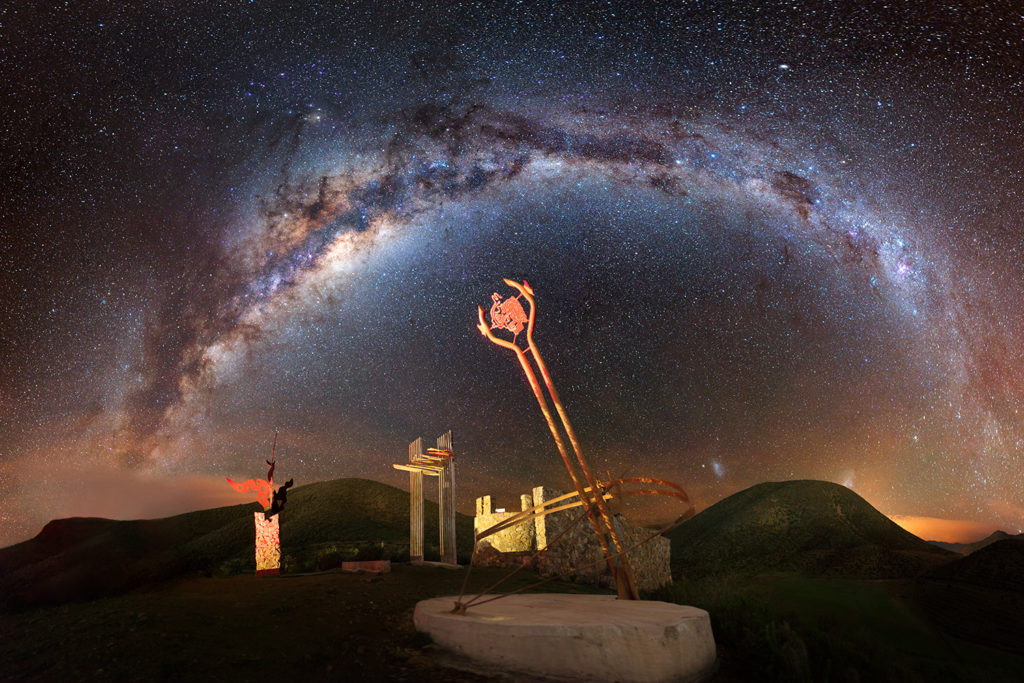The [CII] Resolved ISM in STar-forming galaxies with ALMA (CRISTAL survey) peered back to when the Universe was only about one billion years old – a mere toddler in cosmic terms. These observations are helping scientists understand how galaxies formed and evolved from primordial gas clouds into the organized structures we see today.
Recent News
NSF NRAO Leads Critical Spectrum Studies to Safeguard Radio Astronomy
The U.S. National Science Foundation National Radio Astronomy Observatory (NSF NRAO) has received funding to expand its study of an invisible—and crucial—scientific and technological resource: the radio spectrum.
Largest Oort Cloud Comet Ever Observed Reveals Its Secrets with ALMA’s Powerful Gaze
A team of astronomers has made a groundbreaking discovery by detecting molecular activity in comet C/2014 UN271 (Bernardinelli-Bernstein)—the largest and second most distantly active comet ever observed from the Oort Cloud.
Applications Accepted for 2018 Astronomy in Chile Educator Ambassadors Program

Cerro Mayu Observatory outside La Serena, Chile. The Milky Way arches over sculptures near the Observatory. The Large and Small Magellanic Clouds can be seen near the horizon (right). Photo taken by 2017 ACEAP Ambassador Matt Dieterich (ACEAP/NSF)
Applications are now being accepted for the 2018 Astronomy in Chile Educator Ambassadors Program (ACEAP).
This program, in its fourth year, brings amateur astronomers, planetarium personnel, and astronomy educators to several U.S.-funded astronomy observatories in Chile. While there, ambassadors will receive behind-the-scenes tours of some of the world’s most productive and advanced telescopes, including in-depth information on their instruments and discoveries.
ACEAP is a collaborative project of Associated Universities, Inc., the National Radio Astronomy Observatory, National Optical Astronomy Observatory, and Gemini Observatory. ACEAP was initially funded in 2015 as a two-year pilot program by the National Science Foundation (NSF). Due to its success, NSF decided to fund the program for an additional two years.
To be eligible for this program, individuals must be U.S. citizens or permanent residents. Ambassadors may be either amateur astronomers, kindergarten through college (formal and informal) educators who teach astronomy as part of their curriculum or program, planetarium educators, or others who communicate astronomy to the public.
The ACEAP partners will select eight ambassadors from across the United States and its territories for the excursion, which will begin on 10 June 2018 and continue through 18 June 2018. This nine-day expedition (not including travel time between the U.S. and Chile) will include stops at the Cerro Tololo Inter-American Observatory (CTIO), Gemini-South Observatory, and the Atacama Large Millimeter/submillimeter Array (ALMA).
APPLY NOW – http://epe.aui.edu/programs/astronomy-in-chile-educator-ambassadors-program/

ACEAP 2016 Ambassadors. Ambassadors visit the Atacama Desert following a successful visit to the ALMA high-site at 16,500 ft. Photo by Tim Spuck (AUI/NSF).
Recent News
ALMA Reveals Stunning Details of Infant Galaxies in the Early Universe
The [CII] Resolved ISM in STar-forming galaxies with ALMA (CRISTAL survey) peered back to when the Universe was only about one billion years old – a mere toddler in cosmic terms. These observations are helping scientists understand how galaxies formed and evolved from primordial gas clouds into the organized structures we see today.
NSF NRAO Leads Critical Spectrum Studies to Safeguard Radio Astronomy
The U.S. National Science Foundation National Radio Astronomy Observatory (NSF NRAO) has received funding to expand its study of an invisible—and crucial—scientific and technological resource: the radio spectrum.
Largest Oort Cloud Comet Ever Observed Reveals Its Secrets with ALMA’s Powerful Gaze
A team of astronomers has made a groundbreaking discovery by detecting molecular activity in comet C/2014 UN271 (Bernardinelli-Bernstein)—the largest and second most distantly active comet ever observed from the Oort Cloud.
